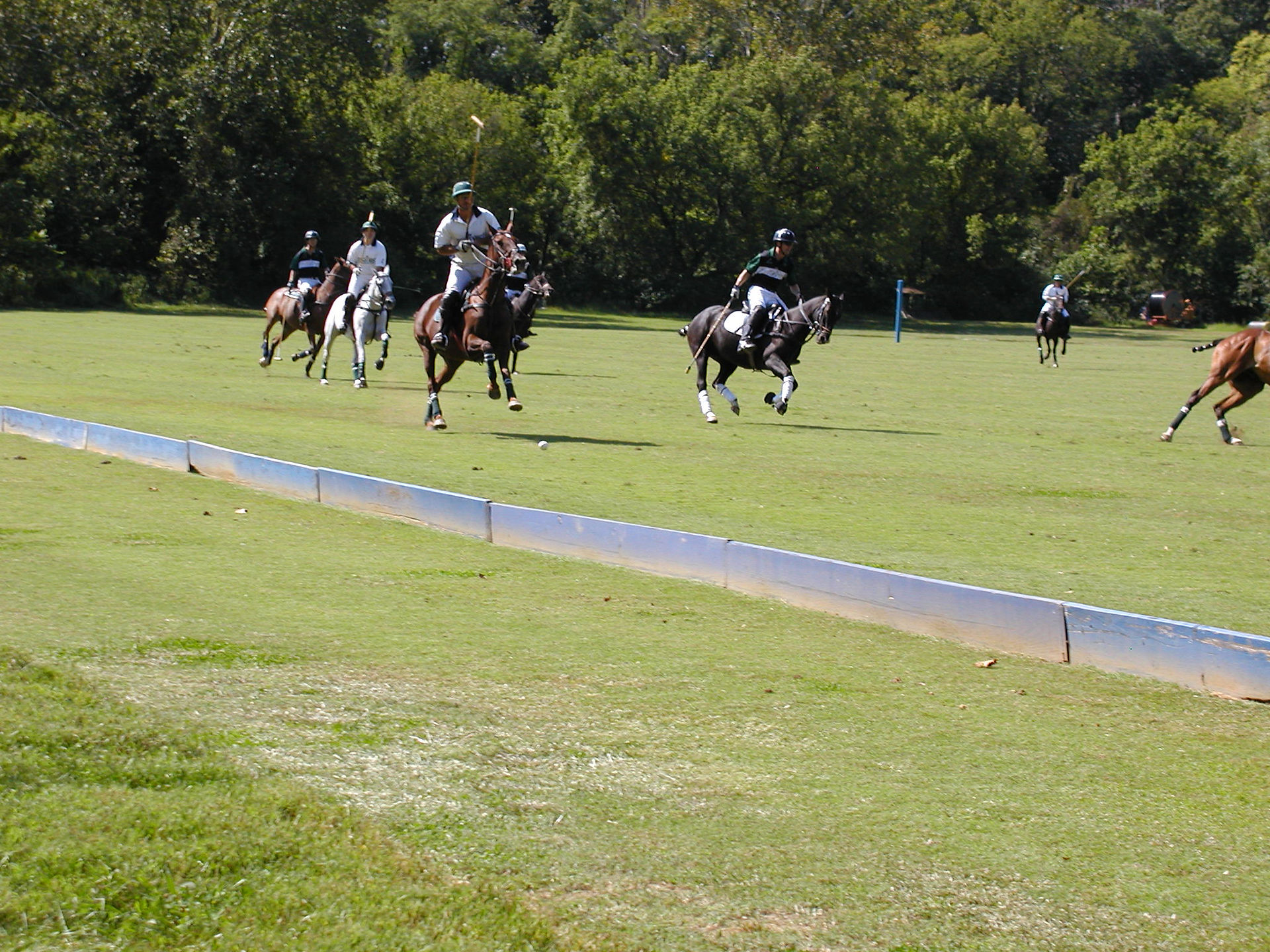



Clagett HorseSports

About: Polo
Polo is believed, based on artwork found to date, to have originated in ancient Persia, although some argue for Mongolia, and started as a way to celebrate victory over a defeated enemy by, for the sake of adding insult to injury, using the heads of the vanquished as the "ball". The game itself took hold as both a fun past-time and a war game for military training and was used for this purpose by militaries into modern times. Brittish soldiers stationed in India in the 1800's are credited with bringing the game home to England and now it is played world wide.
Today there are two types of polo, each with their own character: Traditional outdoor or "grass" polo played on a 10 acre grass playing field, and arena polo played in a large outdoor riding ring or an indoor arena (usually intercollegiate games are indoor). Teams are created using each player's skill rating, called a "handicap," and described as a certain number of "goals" from -2 to 10 (this term is merely a label and does not indicate how many goals a player scores). Polo is unique as a team sport in that generally professionals and amateurs, and men and women, play on the same team together. Each game has a goal level rating from 0 to 40, and all of the players' handicaps on each team cannot add up to more than a game's set goal level. Consequently, you can have multiple combinations of players of different skill levels playing together and, typically, there are one or more professional players with higher goal ratings combined with three or fewer amateurs with lower goal ratings on a team. The rules are primarily safety-oriented, much like motor vehicle traffic regulations for highways, such as determining who has the right-of-way at any given time, and set penalties for failing to follow them. Playing horses are called "ponies" no matter what their actual height or breed is, and each playing period is called a "chukker". The number of chukkers in a game usually depends upon its goal level-- the higher the level, the more chukkers-- with a maximum of 8 at the highest level. The levels of play are grouped into three categories: Low Goal, Medium Goal and High Goal. These designations have different goal level ranges in certain countries, such as Argentina where the overall level of play is higher than other countries. Currently in the U.S., the playing level ranges are roughly: Low Goal = below 10-goal, Medium Goal = 12-20-goal, High Goal = 22-goal and above.
There are private polo instructors, polo schools, and polo clubs with leagues and tournaments with set goal levels of play. Some clubs and schools have informal scrimmaging and coaching leagues with modified playing formats which do not require multiple horses. In some areas there are professionals who lease ponies to players so you do not need to own ponies. The number of ponies needed depends upon your desired playing level, intensity and frequency of games. For example, a recreational Low Goal amateur who plays in a 4-goal league twice a week could manage with 2 well-cared for ponies; a professional hired to play multiple leagues or in the business of making ponies for sale could need 12 and up.
Like any horse sport, riding ability is crucial for advancement in Polo. The good news is that by virtue of having a visible goal, such as getting to and hitting the ball, some people learn to ride faster playing polo; however, some people also start to officially play before their riding skills are up to the necessary level and develop bad habits that keep them from developing as a player further. Riders who already have more correct skills will find release and freedom in using their skills more naturally while a greater portion of their focus is on team strategy and the play they are immersed in. Beyond riding and learning the different swings for hitting the ball and ball control, there are developing field sense, and participating in and eventually creating team strategy. With up to 8 players and horses and an often unpredictable ball, no game is ever the same! For more information on Polo services, please click the Polo Services button below or use the sub-tabs under the Services tab on the top menu bar.


